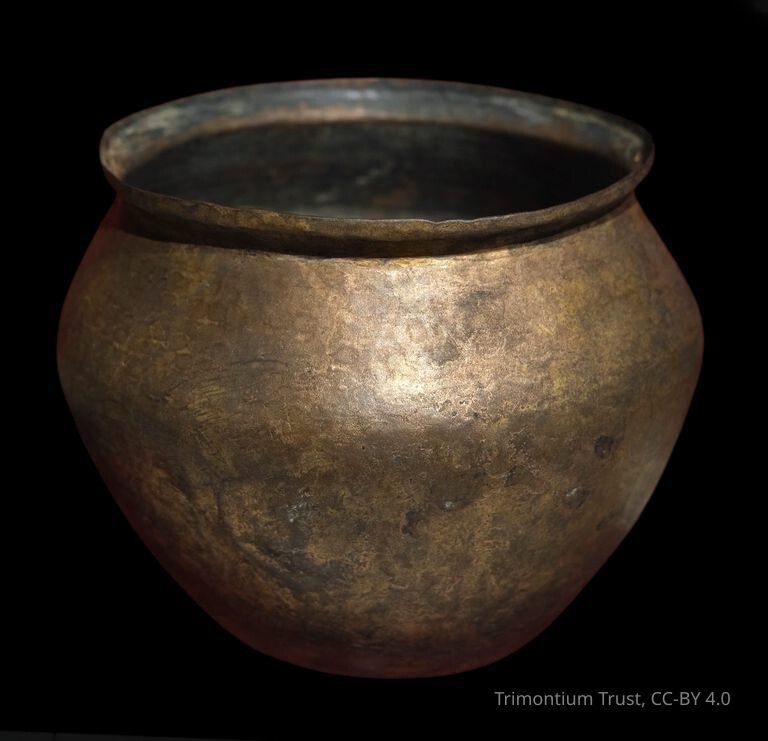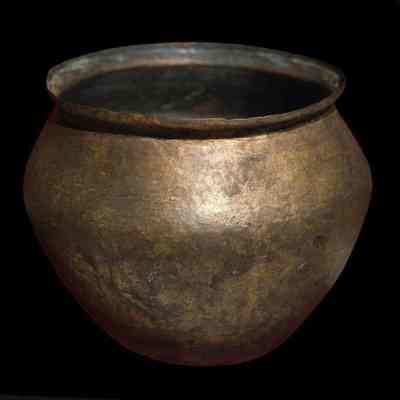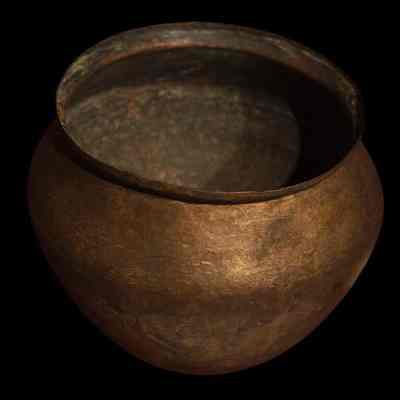Kettle
Name/Title
KettleEntry/Object ID
L.2021.52Description
Bronze camp kettle from the Roman site at Newstead. Four holes around rim where former handle held. Hole in bottom.Use
Kettles were used by the soldiers to eat various types of soups and porridge. Be it on the road or settled in camp, a Roman soldier was responsible for his own weapons and tools, one of which is the kettle for his meals.Context
Seven kettles were found at the site, this one believed to have been a soldier's personal kettle, and not communal. James Curle notes the findings of the kettles in the 'Great Pit' (Pit LVII), and near the baths, however it is not clear where this particular kettle was foundCollection
National Museums ScotlandCategory
Kettle
Food Preparation & Storage
Acquisition
Accession
X.FRA 1187Source (if not Accessioned)
National Museums ScotlandNotes
LoanMade/Created
Time Period
1st - 2nd centuryEthnography
Cultural Region
Continent
EuropeCulture/Tribe
Romano British



